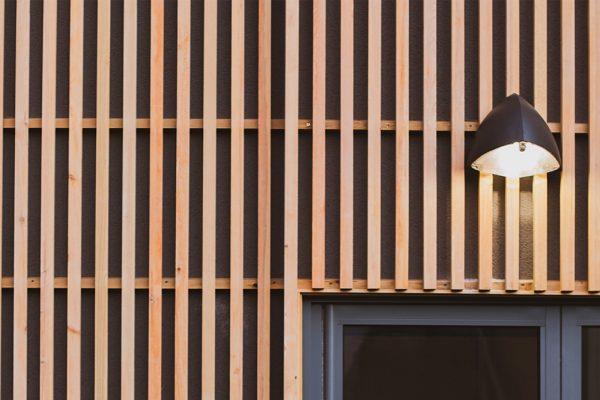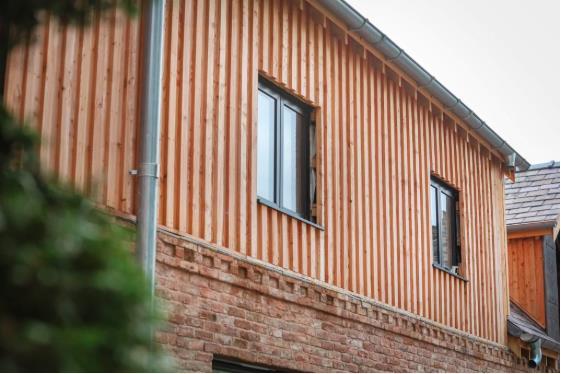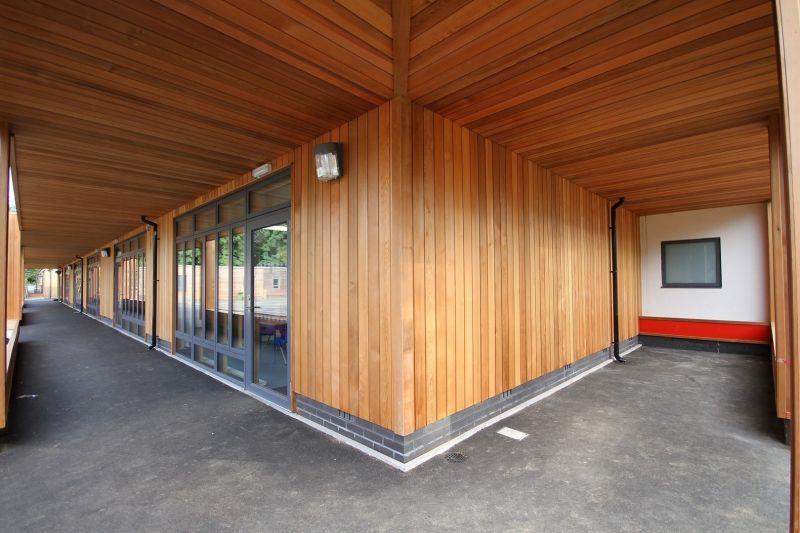

Cedar Cladding: Natural Beauty Meets

What is Cedar Cladding?
Cedar cladding is a natural timber cladding option made from cedar wood, often used to enhance the exterior or interior of buildings with warmth, texture, and charm. It’s especially popular in modern and traditional architectural designs thanks to its lightweight, durable, and weather-resistant properties.
Among the various timber species, Western Red Cedar stands out as the most widely used and preferred for cladding due to its rich color, workability, and longevity.


Why Choose Cedar for Cladding?
Cedar cladding offers a unique combination of aesthetic and functional benefits Whether you’re building a new home, upgrading your façade, or adding architectural flair to a commercial space, here’s why cedar makes a smart choice:

Aesthetic Appeal
Cedar cladding features a striking natural grain and warm color palette ranging from honey tones to deep reddish-browns. It adds organic beauty and sophistication to any building envelope. Over time, untreated cedar gracefully weathers to a silvery-grey patina, enhancing its rustic charm.
Durability & Weather Resistance
Western Red Cedar is naturally resistant to:
● Decay and fungal attacks
● Insects and termites
● Harsh weather (UV rays, rain, wind, and snow)
Its durability makes it ideal for larch cladding in a wide range of climates from coastal areas to high altitudes.
Sustainability
Cedar is a renewable and biodegradable resource. When sourced from certified forests (FSC or PEFC), cedar cladding becomes an eco-friendly choice, helping reduce the carbon footprint of your build.
Lightweight and Easy to Work With
Compared to other hardwoods, cedar is lightweight and easy to cut, nail, or screw. This makes installation more efficient and cost-effective.
Thermal and Acoustic Insulation
Cedar has natural insulating properties, making it effective in improving thermal efficiency and reducing external noise ideal for homes and offices alike.



Types of Cedar Used in Cladding
There are different grades and species of cedar suitable for cladding, each offering varying appearances and performance:
Western Red Cedar
● Most popular and premium option
● Rich, uniform color and straight grain
● Long lifespan: 40–60 years (treated)
● Excellent dimensional stability
Eastern White Cedar
● Lighter in color, often used in Eastern North America
● Ages to a beautiful silver-grey
● Naturally resistant to decay

Alaskan Yellow Cedar
● Pale yellowish hue
● Denser and harder than other cedar types
● Excellent for high-wear applications
Depending on your location and design preferences, each type offers distinct advantages.
Finishesand Treatments
Cedar cladding can be left untreated to weather naturally or finished with oils, stains, or paints to preserve its original color and enhance protection:
● Clear Oil or UV Oil: Maintains the natural cedar color and prevents greying
● Stains: Highlight or darken the wood grain
● Paints: Offer full color coverage with added protection
Proper treatment can extend the life and look of your cedar cladding by decades.
Profiles and Fixing Options
Cedar cladding is available in various profiles to suit different architectural styles and drainage needs:
● Shiplap: Overlapping boards with a clean, linear appearance
● Tongue and Groove (T&G): Interlocking boards for a smooth, modern finish
● Featheredge: Tapered boards ideal for a rustic or traditional aesthetic
● Board and Batten: Alternating wide and narrow boards for a bold, vertical look
Fixings can be visible or hidden, using stainless steel nails or screws to prevent staining and corrosion.



Installation Guidelines
Cedar cladding installation is relatively straightforward but should be done with care to ensure longevity:
1. Acclimate the Timber: Let cedar boards sit on-site for a few days to adjust to local humidity.
2. Ventilation: Allow airflow behind the boards using a rainscreen or batten system.
3. Correct Spacing: Account for seasonal expansion and contraction.
4. Seal Ends: Use end-grain sealant to prevent moisture ingress.
5. Protect from Ground Contact: Keep boards at least 150mm off the ground.
Proper installation enhances durability and minimizes future maintenance.

Maintenance Tips
Cedar cladding can be low-maintenance, especially if left to weather naturally. But for those who want to preserve the fresh-cut appearance:
● Wash Annually: Remove dirt, mold, and mildew using mild soap and water.
● Reapply Finish: Depending on the exposure, reapply oils or stains every 2–5 years.
● Inspect for Damage: Fix cracks, splits, or fastener issues as needed.
Well-maintained cedar cladding can last 40–60 years or more.
Where to Use Cedar Cladding
Thanks to its beauty and resilience, cedar cladding is suitable for:
● House exteriors and façades
● Garden buildings and sheds
● Garages and extensions
● Interior feature walls
● Commercial buildings and storefronts
Its timeless appearance suits both contemporary and traditional builds.

Cedar Cladding vs. Other Wood Cladding Options
Feature Cedar Cladding
Thermowood Larch Cladding Composite Cladding
Appearance Warm, natural grain Slightly darker, aged Knotty, rustic look Uniform, synthetic
Lifespan 40–60 years 25–30 years 20–30 years 25–30 years
Maintenance Low (if untreated) Moderate Moderate Very low
Cost Medium-High Medium Low-Medium High
Sustainability High (FSC options) High Medium-High Varies (plastic content)
Western Red Cedar remains a top choice for those prioritizing natural looks, long-term performance, and sustainability.
Is Cedar Cladding Sustainable?
Absolutely. When sourced responsibly, cedar is one of the most sustainable timber cladding options available. It is:
● Grown in managed forests
● Renewable and biodegradable
● Harvested with minimal environmental impact
Look for FSC or PEFC certification when purchasing cedar cladding to ensure ethical forestry practices.

Is Cedar Cladding Worth It?
If you’re looking for a timeless, natural, and resilient exterior finish, cedar cladding delivers unmatched value. It combines aesthetic elegance with practical benefits like weather resistance, insulation, and sustainability.
Though the initial cost may be higher than some alternatives, the low maintenance, long lifespan, and visual appeal make cedar a wise long-term investment for any property.
Whether used in architectural masterpieces or simple garden buildings, cedar cladding enhances the character and value of your space.
Follow Us to Stay Updated





